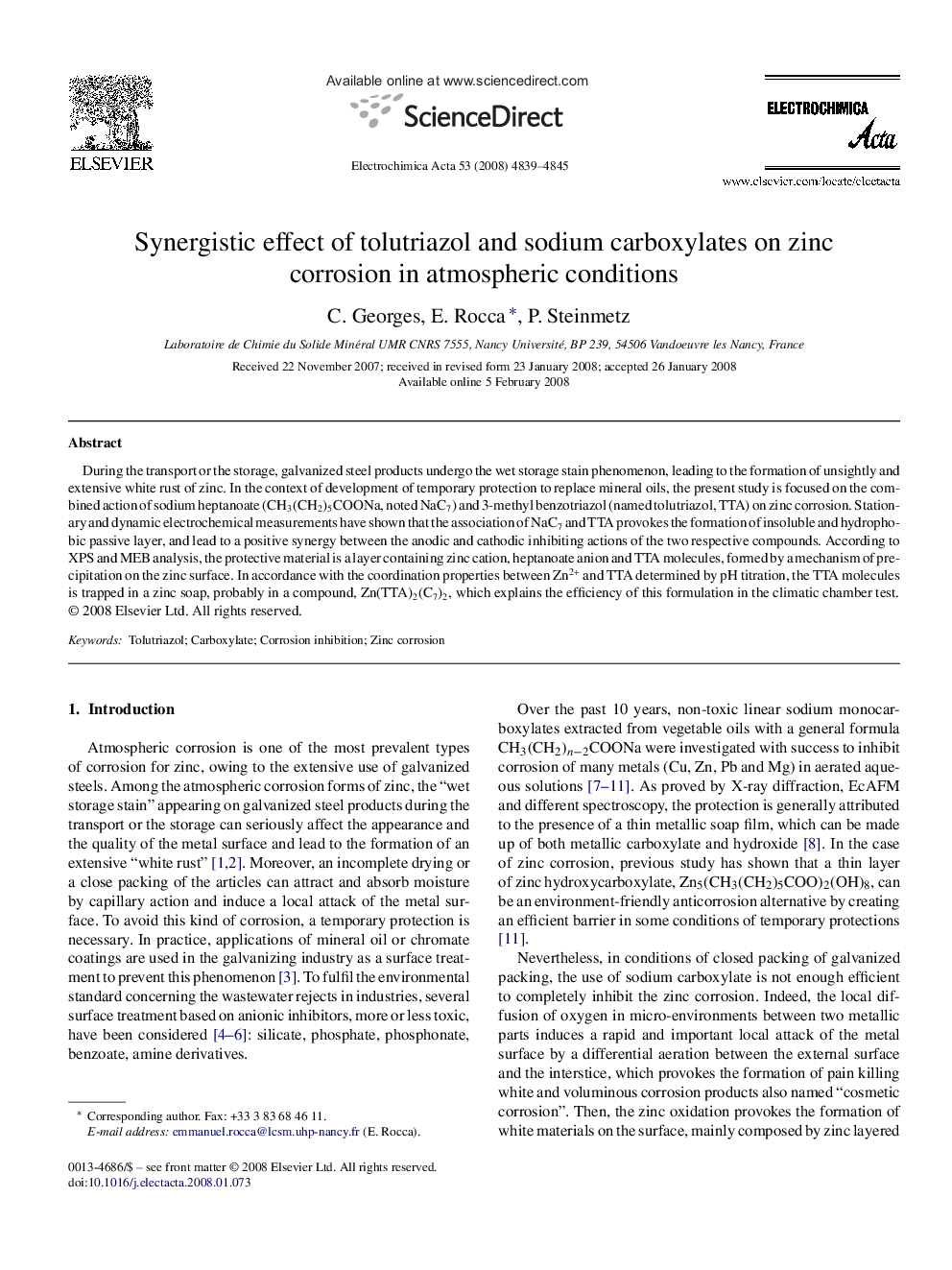| Article ID | Journal | Published Year | Pages | File Type |
|---|---|---|---|---|
| 192868 | Electrochimica Acta | 2008 | 7 Pages |
During the transport or the storage, galvanized steel products undergo the wet storage stain phenomenon, leading to the formation of unsightly and extensive white rust of zinc. In the context of development of temporary protection to replace mineral oils, the present study is focused on the combined action of sodium heptanoate (CH3(CH2)5COONa, noted NaC7) and 3-methyl benzotriazol (named tolutriazol, TTA) on zinc corrosion. Stationary and dynamic electrochemical measurements have shown that the association of NaC7 and TTA provokes the formation of insoluble and hydrophobic passive layer, and lead to a positive synergy between the anodic and cathodic inhibiting actions of the two respective compounds. According to XPS and MEB analysis, the protective material is a layer containing zinc cation, heptanoate anion and TTA molecules, formed by a mechanism of precipitation on the zinc surface. In accordance with the coordination properties between Zn2+ and TTA determined by pH titration, the TTA molecules is trapped in a zinc soap, probably in a compound, Zn(TTA)2(C7)2, which explains the efficiency of this formulation in the climatic chamber test.
